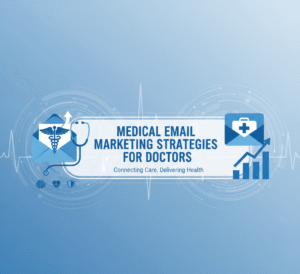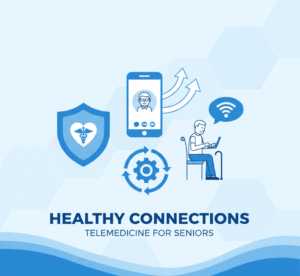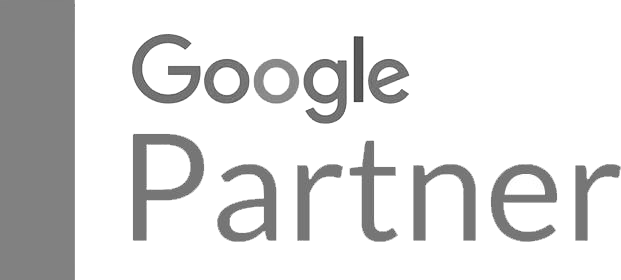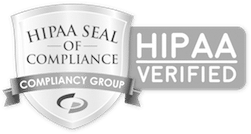“Boost your practice’s authority and attract ideal patients by establishing a trusted, educational presence with strategic Podcasting for Doctors.”
You just wrapped up a patient consultation. You spent fifteen minutes explaining the nuances of a new treatment plan, answering questions, and clarifying misconceptions you’ve seen all over the internet. The patient was engaged and grateful. But as they walk out the door, a thought hits you: how many other people in your community—and beyond—have these same questions? How many are getting their answers from unreliable sources?
In today’s digital world, your patients and potential patients are hungry for credible health information. They are actively searching for it online. This presents a massive opportunity for healthcare professionals to step forward, share their knowledge, and build a trusted presence. This is where a powerful, and surprisingly intimate, medium comes into play: the podcast.
Podcasting for doctors is no longer a fringe idea. It’s a mainstream communication tool that allows you to connect with an audience on a deeply personal level. But is it right for you and your practice? Is it just another marketing trend that will fizzle out, or is it a strategic investment that can transform your practice’s growth and reputation?
This guide is designed to provide you with a clear, no-nonsense answer. We’ll dive deep into the significant benefits of medical podcasting, but we won’t sugarcoat the challenges that come with it. We will weigh the incredible potential against the realistic demands of time, technology, and consistency. By the end, you’ll have a clear framework to decide if launching a podcast is the right move for your practice and a concrete checklist for getting started if the answer is yes.
The “Why”: The Compelling Case for Medical Podcasting
Let’s start with the upside. Why are so many forward-thinking physicians and practice managers turning to the microphone? It boils down to a few powerful advantages that traditional marketing just can’t match.
Benefit 1: Build Unparalleled Authority and Trust
In healthcare, trust is everything. A patient chooses a doctor not just based on their credentials, but on a feeling of confidence and connection. A podcast is arguably one of the most effective tools ever created for building that trust at scale.
Think about it. When someone reads a blog post, they process information. When they see a social media graphic, they consume a quick message. But when they listen to your podcast, they hear the conviction in your voice. They hear your empathy when you discuss a complex topic. They hear your passion for your specialty. They spend 20, 30, or even 40 minutes with you in their ears—while they’re driving to work, walking their dog, or making dinner.
This creates an intimate, one-on-one connection. It’s the difference between reading a textbook summary and having a long conversation with the professor who wrote it. You are no longer just a name on a website or a face in a directory. You become a trusted guide, a familiar voice of reason in a sea of medical misinformation. This is the essence of building authority as a doctor.
This authority has a tangible impact. When a listener eventually becomes a patient, they don’t walk into your office cold. They arrive with a pre-existing foundation of trust. They feel like they already know you. They’re more likely to be receptive to your advice, adhere to treatment plans, and view you as a partner in their health journey. You’re not just any doctor; you’re their doctor, the one they’ve been listening to and learning from for weeks or months. This is the kind of thought leadership in healthcare that truly distinguishes you.
Benefit 2: Create a Deep, Personal Connection with Your Audience
Beyond pure authority, podcasting allows you to showcase your humanity. The clinical setting, by its nature, can be formal and time-constrained. A podcast gives you the space to be yourself. You can share stories (while maintaining patient privacy, of course), discuss your philosophy of care, and let your personality shine through.
This human connection is a powerful magnet for your ideal patient. For instance, a pediatrician with a warm, reassuring demeanor on a podcast will naturally attract anxious new parents. A sports medicine physician who geeks out about the latest recovery techniques will draw in dedicated athletes. Your podcast acts as a filter, attracting the very patients who will resonate most with your personal style and professional approach.
This is a core tenet of modern patient engagement strategies. You are meeting patients where they are—on their phones, during their daily routines—and building a relationship long before they need to book an appointment. You are demystifying medicine, breaking down the barrier of the “white coat,” and making yourself approachable. This connection fosters loyalty and turns patients into advocates for your practice. They’re more likely to leave positive reviews and refer friends and family because they have a genuine connection to you as a person, not just as a healthcare provider.
Benefit 3: The Ultimate Content Engine
Here’s where the conversation shifts from a simple communication tool to a powerful marketing strategy. A single 30-minute podcast episode is not one piece of content. It is a goldmine. With the right approach, one recording session can fuel your entire digital marketing presence for a week or more.
This concept is about repurposing content for marketing, and it’s the key to working smarter, not harder. Consider what you can generate from just one podcast episode recording:
- The full podcast episode is a 30-minute audio file that is distributed to Apple Podcasts, Spotify, and other directories.
- A Full-Length YouTube Video: If you record video alongside the audio, you now have a long-form video for YouTube, the world’s second-largest search engine.
- An SEO-Driven Blog Post: A detailed transcription of the episode can be edited and optimized to become a comprehensive blog post for your website. This article will be filled with relevant keywords that people are searching for on Google, driving organic traffic to your site for months and years to come.
- Short Social Media Video Clips: Your 30-minute recording contains dozens of “golden nuggets.” These could be a 60-second explanation of a common condition, a 90-second myth-busting segment, or a 30-second powerful tip. These clips are perfect for Instagram Reels, TikTok, YouTube Shorts, and Facebook, reaching an entirely different segment of your audience.
- Quote Graphics for Social Media: Extract the most impactful, tweetable lines from your episode and transform them into visually appealing graphics. These are highly shareable and great for reinforcing key messages.
- An Email Newsletter: Craft an email to your patient list summarizing the episode’s key takeaways, with a link to listen to the whole show. This nurtures your existing patient base and keeps your practice at the top of their mind.
- A Patient Handout or PDF: If your episode is a deep dive into a specific topic, such as “Preparing for Your First Colonoscopy,” you can summarize the key points into a downloadable PDF guide. This provides immense value and serves as a lead magnet.
Suddenly, that one hour of recording has produced over a dozen unique content assets to populate your entire online presence. This is how you achieve consistency and ubiquity in your healthcare content marketing without burning out.
Benefit 4: Expand Your Professional Network and Referral Streams
A podcast doesn’t have to be a solo endeavor. In fact, an interview-based format can be one of the most strategic moves you make.
When you invite a guest onto your show—whether it’s another specialist in a complementary field, a physical therapist, a dietician, or a local wellness expert—several powerful things happen. First, you provide diverse and valuable content for your audience. Second, you build a direct professional relationship with that guest. This can lead to a significant increase in professional referrals, as you are now top of mind for them.
Third, and perhaps most importantly, when that guest shares the episode with their audience, you get introduced to a brand-new pool of potential listeners and patients with an implied endorsement. It’s a powerful way to cross-pollinate audiences and expand your reach far beyond your own network. Over time, your podcast can position your practice as a central, trusted hub of health information in your community or niche, attracting both patients and other top-tier professionals to your sphere of influence.
The Reality Check: The Honest Challenges of Podcasting for Doctors
The benefits are clearly compelling. But anyone who tells you that starting a podcast is easy is trying to sell you something. To make an informed decision, you must examine the challenges with an open mind. For a busy healthcare professional, these are not trivial concerns.
Challenge 1: The Unforgiving Tyranny of Time
This is the biggest hurdle for most physicians. Your time is your most valuable and scarce resource. Launching and maintaining a quality podcast is a significant time commitment that goes far beyond just hitting “record.”
Let’s break down the realistic time investment for a single 30-minute episode, especially when you’re just starting:
- Ideation and Research (1-2 hours): What will you talk about? What are the key points you need to make? Are there any recent studies you should reference?
- Outlining or Scripting (1-2 hours): “Winging it” rarely works. You need a structured outline to ensure your episode is coherent, valuable, and stays on track.
- Setup and Recording (1 hour): This includes setting up your microphone, doing sound checks, and the actual recording time (allowing for a few mistakes and retakes).
- Editing and Production (2-5 hours): This is the hidden time sink. You’ll need to remove “ums,” “ahs,” long pauses, and background noise. You’ll need to add your intro/outro music and master the final audio file so it sounds professional. For a beginner, this process can be slow and frustrating.
- Writing Show Notes and Creating Graphics (1-2 hours): You need to write a compelling summary of the episode, list any resources you mentioned, and create the promotional graphics for social media.
- Publishing and Promotion (1 hour): This involves uploading the final audio to your podcast host, scheduling it, and then pushing it out across all your marketing channels.
Total Time Per Episode: 8 to 13 hours.
Let that number sink in. If you plan to publish a weekly podcast, you are essentially taking on a new, very demanding part-time job. Even a bi-weekly show requires a consistent and substantial time block. This is often the single factor that leads to “podfading”—where a show launches with enthusiasm but disappears after a handful of episodes.
Challenge 2: The Technical Gear and Learning Curve
While you don’t need a million-dollar recording studio, you do need some basic equipment and the willingness to learn how to use it. The technical side can be intimidating for those unfamiliar with it.
- Hardware: At a minimum, you’ll need a good quality USB microphone (popular starting choices include the Blue Yeti or Rode NT-USB), a pair of headphones (to monitor your audio and prevent echo), and a pop filter (to soften harsh “p” and “b” sounds). You also need a quiet space to record. A closet full of clothes works surprisingly well because the soft surfaces absorb sound and reduce echo.
- Software: You’ll need software to record and edit your audio. Audacity is a free and powerful option, but it has a steep learning curve. Services like Descript or Hindenburg are more user-friendly but come with a subscription fee.
- Hosting: You can’t just upload an MP3 file to your website. You need a dedicated podcast hosting service (like Libsyn, Buzzsprout, or Transistor.fm). This service stores your audio files and generates the RSS feed that syndicates your show to platforms like Apple Podcasts and Spotify.
Beyond the gear, there’s a new skill set to learn. You’ll need to understand basic mic technique (how far to sit from the mic), the fundamentals of audio editing, and how to tag and upload your files properly. It’s all learnable, but it’s another demand on your time and mental energy.
Challenge 3: The Consistency Gauntlet
An audience is built through rhythm and reliability. If you want people to make your podcast a part of their routine, you have to be a reliable part of their weekly or monthly routine. This is the consistency gauntlet.
Publishing three episodes and then taking a two-month break kills all momentum. Listeners forget about you, and the podcasting platform algorithms are less likely to recommend your show. True success in podcasting is a marathon, not a sprint. You must be prepared to commit to a regular publishing schedule (whether it’s weekly or bi-weekly) for at least a year to see significant results.
This requires robust planning and a systematic approach to content creation for physicians. It means having a backlog of ideas, batch-recording episodes in advance, and building the production process into your regular workflow. It is a long-term strategic commitment, not a short-term marketing campaign.
Challenge 4: Navigating Compliance and HIPAA
For healthcare professionals, this is a non-negotiable and critical challenge. You operate under a strict set of professional and legal guidelines that must be respected at all times.
The cardinal rule is simple: never, ever discuss specific patient cases or share any Protected Health Information (PHI) without explicit, documented, and written consent. The easiest and safest path is to avoid patient-specific anecdotes altogether.
Instead, focus your content on:
- General health education and preventative care.
- Explaining common conditions or procedures in an accessible way.
- Debunking widespread medical myths.
- Discussing new research or advancements in your field.
- Answering anonymous, generalized questions submitted by your audience.
Furthermore, it is crucial to include a clear disclaimer at the beginning and end of every episode, as well as in your show notes. This disclaimer should state that the podcast is for informational and educational purposes only, does not constitute medical advice, and does not establish a doctor-patient relationship. Consulting with a healthcare attorney before launching is always a wise investment to ensure you are fully compliant with all relevant regulations.
“Okay, I’m In.” Your Getting-Started Checklist for Medical Podcasting
If you’ve weighed the pros and cons and decided the potential rewards are worth the effort, congratulations! Now it’s time to move from idea to action. Here is a practical, step-by-step checklist on how to start a medical podcast.
Step 1: Define Your “Why” and Your “Who” Before you touch a microphone, get crystal clear on your goals.
- Your Why: What is the primary business objective? Is it to attract more patients for a specific high-value service (e.g., joint replacements, cosmetic procedures)? Is it to build your reputation as a national expert in a sub-specialty? Is it simply to educate your local community and reduce consultation times by pre-educating patients? Your “why” will guide every decision you make.
- Your Who: Who is your ideal listener? Be specific. “The general public” is too broad. Is it “first-time parents in their 30s”? Is it “weekend warriors over 40 worried about injuries”? Is it “other primary care physicians who might refer patients to you”? Your target audience dictates your tone, the complexity of your topic, and the effectiveness of your marketing efforts.
Step 2: Choose Your Niche and Format
- Niche: Don’t be “The General Health Podcast.” That’s too crowded. Niche down. Become the go-to resource for a specific topic. Examples: “The Menopause Method,” “Pediatric Sleep Solutions,” “The Non-Surgical Orthopedics Show.” A narrow focus makes it easier to attract a dedicated audience.
- Format: How will you structure your show?
- Solo Host: You are the expert, teaching directly to the audience. Great for establishing authority.
- Co-hosted: You and a partner or colleague discuss topics. The back-and-forth can be very engaging.
- Interview-Based: You bring on different guests. Excellent for networking and reaching new audiences.
- Storytelling: Share anonymized case studies or patient journeys to illustrate key concepts.
Step 3: Gear Up (The Smart Way) You don’t need to break the bank. Start with the essentials:
- Microphone: A quality USB mic, such as the Blue Yeti, Rode NT-USB, or Audio-Technica AT2020, is more than enough to get started.
- Headphones: Any pair of closed-back headphones will do. You need them to prevent audio from your speakers from bleeding into your microphone.
- Recording Space: Find a small, quiet room with plenty of soft surfaces (such as carpet, curtains, or a closet full of clothes) to absorb echoes.
Step 4: Plan Your First Batch of Episodes
Your best friend in podcasting is batching. Don’t try to create one episode from scratch every week. Instead, dedicate a block of time to plan and record your first 5-10 episodes before you even launch. This creates a valuable content buffer, relieves the pressure of a constant deadline, and ensures you start strong. A great place to source topics is to list the ten most common questions patients ask you.
Step 5: Record, Edit, and Host
- Record & Edit: Use software like Audacity (free), Descript (transcription-based editing), or Hindenburg (designed for storytellers) to record and edit your audio.
- Find a Host: Sign up for a podcast hosting service like Libsyn, Buzzsprout, or Transistor.fm. Follow their instructions to set up your show and upload your edited audio files.
Step 6: Create Your Brand Assets
- Podcast Name: Make it memorable, descriptive, and easy to spell.
- Cover Art: This is the visual representation that first appears in podcast apps. It needs to be professional, straightforward, and easy to read, even as a small thumbnail.
- Intro/Outro Music: Utilize royalty-free music from reputable sites like Epidemic Sound or Artlist to give your show a polished and professional feel.
Step 7: Launch and Promote!
Submit your podcast’s RSS feed (provided by your host) to all major directories, including Apple Podcasts, Spotify, and Google Podcasts. Then, shout it from the rooftops! Share the news with your existing patients, feature it on your website’s homepage, post about it on your practice’s social media channels, and include it in your email newsletter. The goal is to get that initial momentum from your existing community.
The Multiplier Effect: Turning One Podcast into a Complete Marketing Strategy
We’ve explored the immense potential of a podcast. We’ve also detailed the significant work required to produce one. Herein lies the core dilemma for any busy physician: how do you reap the rewards without sacrificing all of your precious time?
Even if you manage to find the 10+ hours per week to produce a high-quality episode, simply publishing that audio file and hoping for the best is like buying a Formula 1 car and only driving it in the school pickup line. You are leaving 90% of its power and value untapped.
The actual return on investment from podcasting for doctors is realized when it stops being a standalone task and becomes the central engine of a complete, integrated digital marketing strategy for doctors.
This is where a strategic partner like InvigoMedia comes in. We don’t just produce podcasts. We partner with healthcare professionals to build authority and drive practice growth. We operate on a simple yet powerful principle: you do what you do best, and we take care of the rest.
Here’s what our “Multiplier Effect” process looks like:
- You show up. You sit down for one hour per week or every other week and simply talk about what you know best—your medical expertise. You share your passion and your knowledge. That’s it. Your time commitment is minimized to the highest-value activity: being the expert.
- We take it from there. Our team of producers, writers, and marketing strategists transforms that single one-hour recording into a comprehensive ecosystem of content designed to reach your ideal patients on every platform they use.
From that one recording, we will deliver:
- A Professionally Produced Podcast: We edit, mix, and master the audio to broadcast quality, add your branded intro and outro, and publish it across all major podcast platforms.
- An SEO-Optimized Blog Post: We transcribe the whole episode and our expert writers craft it into a detailed, keyword-rich article for your practice’s website, designed to rank on Google and attract new patients through organic search.
- A Full-Length YouTube Video: We take the video recording, add professional branding, graphics, and chapter markers, and publish it to your YouTube channel, optimizing it for discoverability.
- A Barrage of Social Media Micro-Content: We meticulously review the episode to identify the most potent 30-90 second clips. These “golden nuggets” are then edited into engaging, vertically formatted videos for Instagram Reels, TikTok, YouTube Shorts, and LinkedIn, capturing attention and driving engagement.
- Eye-Catching Quote Graphics: We extract the most powerful statements and transform them into compelling, shareable graphics for your social media feeds, reinforcing your key messages and showcasing your expertise.
- A Nurturing Email Newsletter: We craft a concise, value-packed email for your patient list, highlighting the episode’s key takeaways and driving them to the complete content, keeping your practice top-of-mind.
This is how you unlock the actual value of your expertise. You invest one hour of your time and, in return, receive a whole week’s worth of strategic, multi-platform marketing content. You achieve a consistent, authoritative presence everywhere your patients are looking, all while saving dozens of hours of work.
So, Should Your Practice Start a Podcast?
The answer is a strategic “it depends.”
If you view a podcast as just another item on your already-packed to-do list, the answer is likely no. The time commitment and consistency required will lead to frustration and burnout.
But if you reframe the question—if you see a podcast not as a task, but as the cornerstone of a modern, authority-building content strategy that can fuel your entire digital marketing effort—then the answer is a resounding yes. The potential to build trust, connect with patients on a human level, and grow your practice is immense.
You don’t have to choose between being a great doctor and being a great marketer. You can focus on what you do best and partner with a team that can amplify your voice.
Ready to discover how a podcast can become the catalyst for your practice’s growth? You bring the expertise; we’ll get the strategy and the execution. Contact InvigoMedia today for a complimentary content strategy session, and let’s work together to build your authority.
Frequently Asked Questions (FAQs)
1. How long should a medical podcast episode be?
For busy professionals and patients, the optimal time slot is typically between 20 and 35 minutes. This is long enough to provide substantial value but short enough to fit into a daily commute or workout.
2. How often should I publish a new episode?
Consistency is far more important than frequency. A consistent bi-weekly (every two weeks) podcast is much better than a weekly show that randomly misses weeks. Choose a schedule you can realistically commit to for the long term. A weekly or bi-weekly cadence strikes the right balance for building audience momentum.
3. Do I need to be a great public speaker?
Absolutely not. Authenticity is much more important than polished perfection. Your listeners want to hear from a real, relatable expert. Speak passionately about what you know, and your message will connect. Like any skill, you’ll naturally get more comfortable and confident with practice.
4. What topics should I talk about on my medical podcast?
Start with the lowest-hanging fruit: make a list of the 10-15 most common questions you get from patients every single week. Each one of those is a potential episode. Other great topics include debunking common myths in your specialty, discussing new research in an accessible manner, walking patients through the preparation for a procedure, or explaining the science behind a standard treatment.
5. How do I measure the success or ROI of my podcast?
While download numbers are a good starting metric, they don’t tell the whole story. The fundamental success metrics for a practice are more tangible:
- Website Traffic: Are you seeing an increase in visitors to the blog posts created from your show notes?
- New Patient Inquiries: Add a question to your intake form: “How did you hear about us?” You’ll be surprised how many start saying “your podcast.”
- Consultation Quality: Do new patients who listen to your podcast come in better informed and more prepared for their consultation?
- Professional Referrals: Are you seeing an uptick in referrals from guests you’ve had on your show?
6. Is it okay to talk about specific products or services I offer?
Yes, but it should be done tastefully and transparently. The primary goal of your podcast should always be to educate and provide value. A 90/10 rule is a good guideline: 90% of your content should be purely educational, and 10% can be a call-to-action that mentions a relevant service. Always be transparent and disclose any financial interests if you discuss a specific brand-name product or device.













